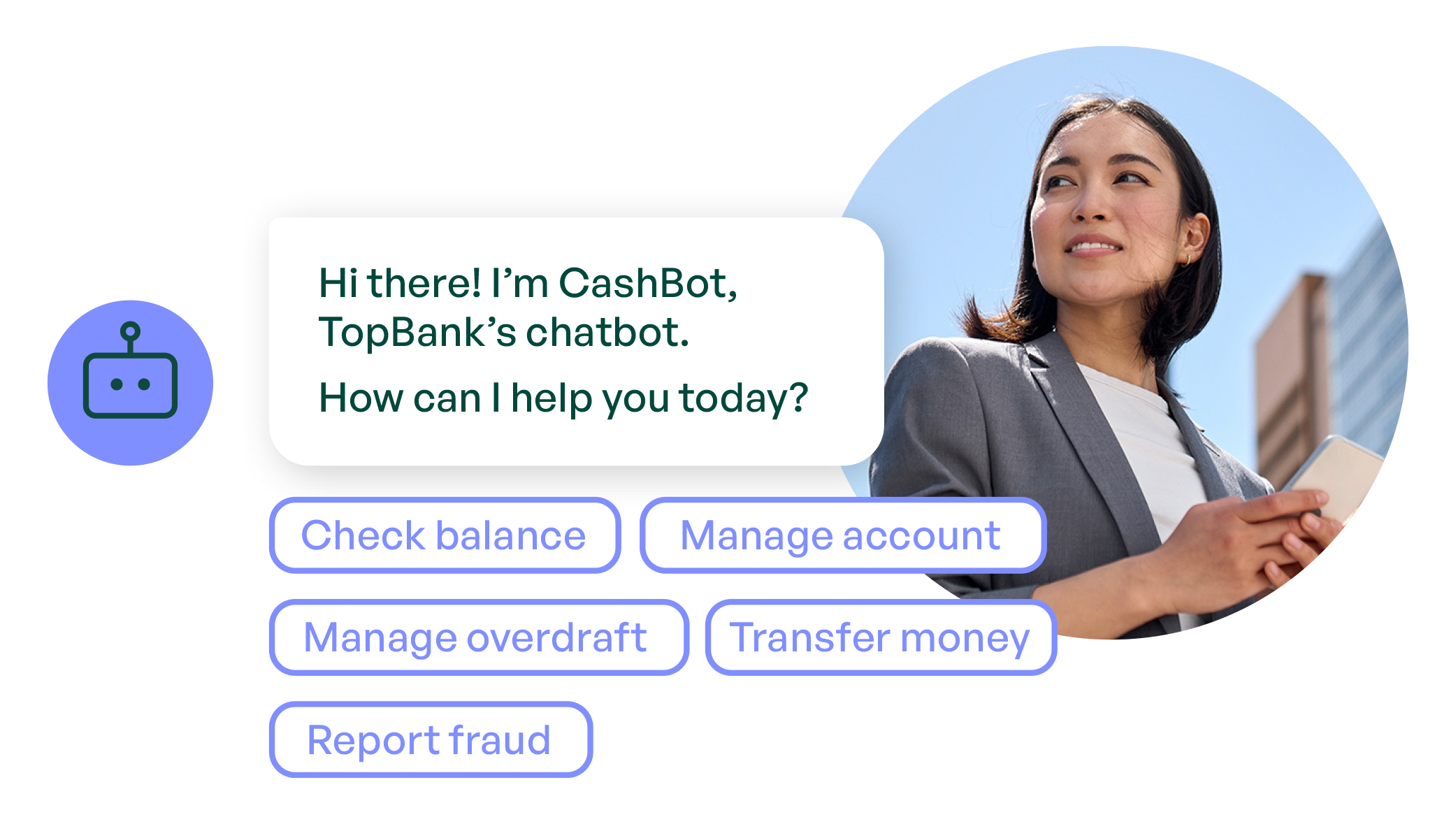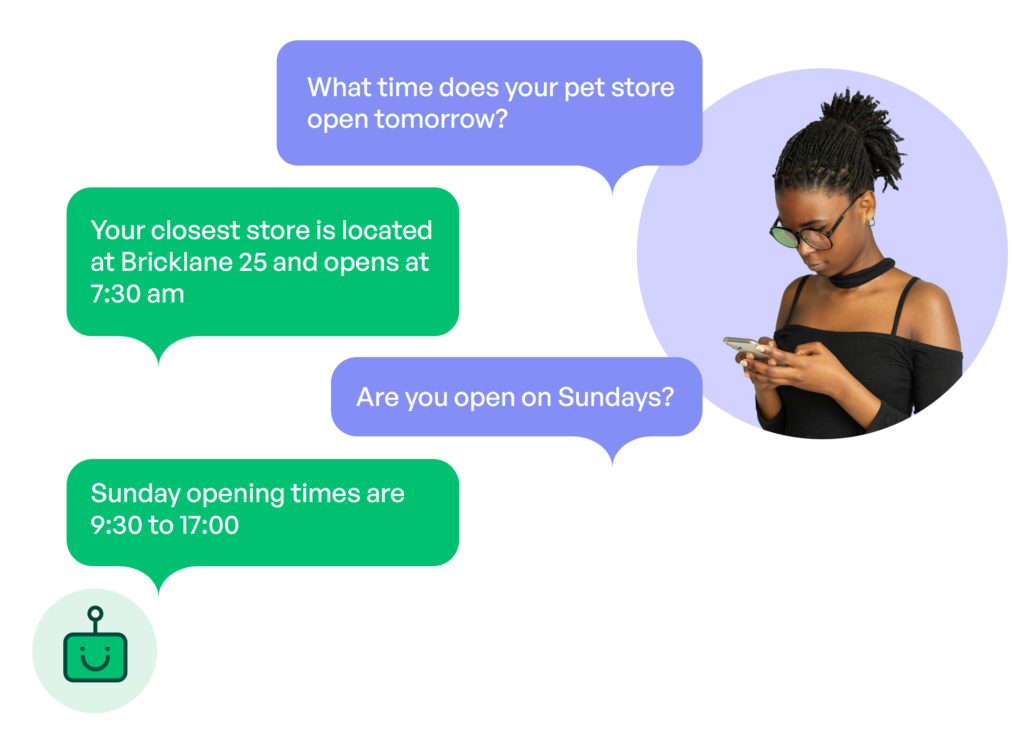With digital consumers increasingly looking for immediate and convenient ways to communicate with brands, AI chatbots are being more widely implemented on company websites. In fact, Gartner estimates that chatbots will become a primary customer service channel by 2027.
Driven by a set of predetermined rules or powered by Artificial Intelligence (AI), these chatbots can carry out various tasks, from answering Frequently Asked Questions (FAQs) to providing product recommendations and coordinating appointments. By automating routine inquiries, companies can now dedicate their human resources to more complex tasks and increase their overall productivity.

If you’re at the helm of a business, you might be considering to implement chatbots for websites as part of your customer experience improvement efforts. As you develop your strategy, it is crucial to understand the difference between rule-based chatbot and a smart AI chatbot platform. The crucial question to ask is which aligns best with your business objectives and how much difference will each of the options make for your customers. Let’s break it down.
Ruled-Based Chatbots: The Basics
At its core, a rule-based chatbot functions through pre-set rules and scripts. These dictate how the chatbot should respond to specific inputs from users, usually the most common FAQs. Instead of “thinking” or “learning” from new information, they follow a straightforward “if-then” logic – producing specific concrete upon recognising distinct user inputs.
For example, if a user types “track order,” the chatbot might reply with “Please provide your order number” based on predefined conditions. Similarly, when a user asks about “store hours,” the chatbot can instantly pull up the business’ operating hours. Their strength lies in their consistency and predictability, ensuring each user query corresponds with an appropriate response.
AI Chatbots: The Next Generation
Transitioning from the rule-based design, chatbots have evolved into an intelligent, self-learning medium that can independently resolve up to 80% of customer requests, depending on the business. Unlike their basic counterparts, these smart chatbots harness the potential of machine learning and Natural Language Processing (NLP) to handle a wide variety of user inputs, even if they have not been explicitly programmed for them.
The advantages of chatbot models that use AI are vast. Firstly, they’re dynamic. They can comprehend various languages, understand user context, and offer tailored responses. Their conversational chatbot nature ensures that interactions feel genuine and less like talking to a robot.
Moreover, an AI chatbot platform learns continuously. With every interaction, they become more efficient, adapting to user behaviours and preferences. Over time, these chatbots can predict user needs and offer solutions even before they realise they need them. This self-learning ability sets them apart, making them an invaluable asset for businesses.

What is the Difference Between Rule-Based Chatbot and AI Chatbot?
While ruled-based and AI chatbots fundamentally automate interactions and enhance user experience, the nuances in their functionality set them apart.
1. Scope of Interactions
For instance, rule-based chatbots follow a clear-cut, predetermined path in conversations. They lean heavily on specific keywords identified in user messages, responding based on established protocols. The advantage? Predictability. Users and businesses alike can anticipate the bot’s responses, ensuring consistency in user experience.
Conversely, AI chatbots promise spontaneity, emulating human-like interactions. They can engage users in free-flowing conversations without being bound by a fixed set of responses. This not only facilitates a more personalised user experience but also easily addresses more complicated queries.
2. Learning and Adaptability
The most distinguishable difference lies in the adaptability factor. Rule-based chatbots are static in nature. Their knowledge and response patterns remain unchanged until manually updated, making them stable but also potentially stagnant.
In contrast, AI chatbots are ever-evolving entities. Every user interaction offers a learning opportunity, enriching their knowledge base and sharpening their response mechanisms. This ensures they remain attuned to user needs and preferences, delivering precise answers. As such, they can be used to increase engagements, provide quick responses to FAQs, automate appointments and reminders, collect feedback, reduce shopping cart abandonments, qualify leads, and more.

3. Integration and Scalability
Rule-based chatbots also typically have a limited scope when it comes to integration. They are designed to perform a specific set of tasks and might not easily adapt to new platforms or tools without significant modifications. Their scalability is also confined as introducing new functionalities or pathways can be labour-intensive.
In stark contrast, AI chatbots, especially those built on advanced AI chatbot platforms, offer seamless integration capabilities. They can be easily synchronised with Customer Relationship Management (CRM) systems, databases, and other tools, enhancing their utility. Moreover, AI chatbots are inherently scalable, capable of growing and expanding their functionalities as businesses evolve and user needs change.
The Verdict
In our rapidly evolving digital landscape, the expectations of modern customers are soaring. They aren’t just looking for fast responses; they want those responses to be personalised, insightful, and consistent across every channel they choose to interact with. In response, many organisations are anticipating doubling their digital interactions, with investments targeted towards enhancing omnichannel and digital tools, notably chatbots – as revealed in McKinsey’s 2022 State of Customer Care Survey.
If you’re looking to embrace this shift, rule-based chatbots can be your go-to for simple, straightforward tasks. Yet, if you seek deep, meaningful interactions, an AI chatbot platform can elevate your sales, marketing and CX strategies, providing sustained support as your business grows.
For more information, learn how you can start enabling self-service and elevate customer experience with GMS’ AI Chatbots solution.


